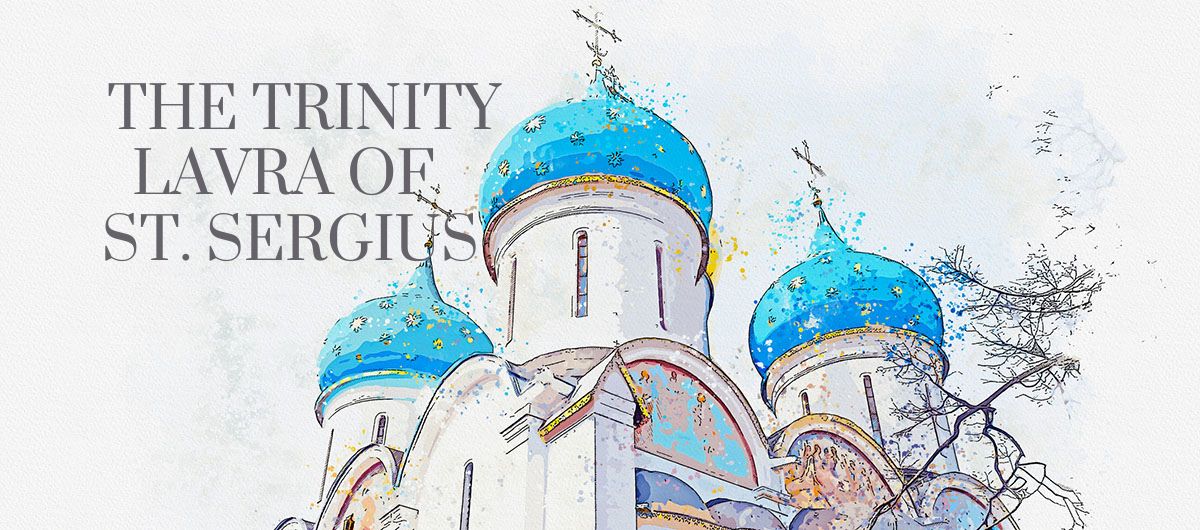Remembering Russia’s Most Beautiful and Majestic Monastery

With travel to Russia prohibited for the foreseeable future, I’ve been reflecting on my own experiences in this most culturally diverse, complex, fascinating and unique collection of countries. Russia is just that: a collection of regions, towns and cities. Each with its own language, foods, traditions and sadly united under another despot. With singular devotion to the arts: performance, architectural, sculptural, pictorial. In metallurgy and mosaics, in marble, frescoed and on canvas. Russian culture venerates the arts.
And this is displayed no more passionately than in their religious iconography and architecture.
And of these, The Trinity Lavra of St. Sergius is one of the most breathtaking collusion of all of the arts. In the world. We could debate this, but I’ll leave you to view the pictures I took on my last visit.
A Singular Devotion to the Arts
The spiritual centre of the Russian Orthodox Church, the monastery is situated in the town of Sergiyev Posad, about 40 miles northeast of Moscow and currently is home to over 300 monks.

A “lavra ” is a type of monastery consisting of a cluster of cells or caves for monks, with a church and sometimes a refectory at the center. This one has a refectory where I had lunch on my visit. It was bustling, bright, cheery and the food was delicious!

Only two monasteries in modern Russia are distinguished by the term ‘lavra’ – one is this monastery at Sergiev Posad. The Trinity St Sergius Monastery had the honour of its title as ‘lavra’ bestowed upon it by Russian Empress Elizaveta, in 1744.




The largest church bell in Russia is the Tsar Bell, weighing 72 tons which hangs in the Bell Tower.
Ornate Architectural Decoration
As an illustration, the interior iconography, frescos, elaborate chandeliers and especially the ornate architectural decoration in gold are jaw-dropping in detail.

The church’s crypt contains the relics of the monastery’s founder, St Sergey of Radonezh.
In front of the Dormition Cathedral is the Godunov Burial Vault. This, the final resting place for Czar Boris Godunov, his wife, a son who reigned briefly as Czar Fyodor II and daughter who became a nun at the lavra and lived through the 1608-1610 siege.

St Sergius of Radonezh


The Holy Monk, St Sergius of Radonezh established a small religious community at Makovets Hill, 70 kilometres from Moscow. In 1377 the monks built Church of the Holy Trinity to serve their worship needs. The depth of Christian study and devotion at the community became famed throughout Russia, becoming a spiritual centre serving the whole country. Grand-Princes came to the monastery for blessings before military conflicts.
By 1422 the original wooden Trinity Church had been replaced with a stone church – the Trinity Cathedral. Great ikon-painters such as Andrei Rublev and Daniil Chorny were involved in the murals and frescoes of the new cathedral. Rublev’s famous ikon ‘The Trinity’ was created especially for the cathedral.
During the political upheavals of the early 17th century known as the Time of Troubles – during which Russia was invaded by a Polish-Lithuanian occupation force – the monastery withstood a sixteen-month siege by the would-be occupiers. Despite terrible suffering and damage, the monastery defended itself against the attacks.
anotherrussia.com



In my opinion, the best view of the monastery can be seen from the Blinnary Gora, or Pancake Hill Observation Platform, named in honor of the tradition of serving pancakes to hungry pilgrims making the journey to the lavra.


In support of Ukraine, with fond memories of my visits to Russia and a fervent hope to return.
Related Posts
Eat at the Most Bizarre, (delish) and Colorful Food Circus in the World!
Bubbling cauldrons of soups, meats wrapped in palm leaves, a rainbow of desserts – honestly…when …
May 17, 2024Giving Alms: Silent and Beautiful Sunrise in Luang Prabang
Each morning before sunrise, the faithful line the sidewalks of the city of Luang Prabang …
May 13, 2024

Leave A Comment